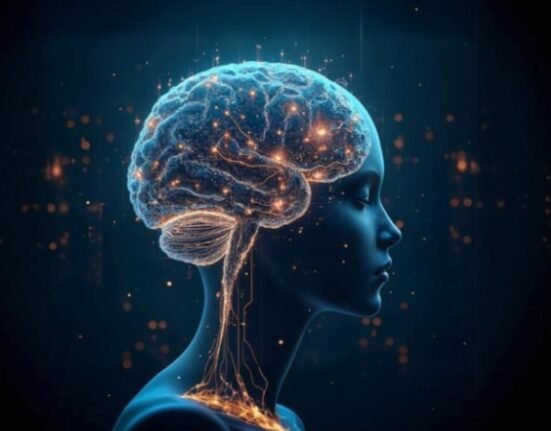Do you remember what you dreamed about last night? Or did you sleep through the entire night without dreaming? If you had a dream, was it pleasant or unpleasant? Dreams feel like a blur between what is real and unreal. At times, they feel so vivid that we don’t even recognize we are dreaming. Other times we wake up gasping for air, scared awake by a nightmare with cold sweat covering our foreheads. Sometimes we have dreams that we just cannot let go of.

We spend days ruminating over them, wondering if it means something more, something deeper. We all have caught ourselves looking up the meaning of a silly dream we had, even if it might feel slightly embarrassing to admit. In simple terms, dreams are images weaved in the form of our stories during sleep to help our brains process information gathered throughout the day. Slightly disappointing, no? Unfortunately, it is not a call from another world asking you to come save them.
However, this does not mean that dreams are meaningless. No, they are far away from what we consider meaningless. Now you might wonder why you dream about such unrealistic things that you cannot connect with reality. Maybe you once dreamed about flying in a car, gaining some superpower, or maybe being chased by a ghost? Well, this article here will certainly answer all your questions about dreams and what they mean. Nowadays, many psychologists study dreams and how it is manifested.
However, this was not always the case. Dreams were majorly a mystery most psychologists deliberately ignored. Psychology at one time was obsessed with “scientific evidence” and consciousness choosing to ignore what they believed unscientific. This was the case until Sigmund Freud entered the field with his concept of unconsciousness. He created and worked on the initial scientific theory for interpreting dreams. He considered dreams as the “royal and novel road to the unconscious mind” (Freud, 1900). It was an attempt to understand the waking experience unknown even to the individual himself. His theory of dream analysis may have the answer to why you dreamt about flying around the globe on a scooter.
Who Is Sigmund Freud?
If you are a psychology student, then you might already know who he is. Whether you hate him or adore him, his contributions to the field of psychology are undeniably important. Without his works, we may have never explored the deeper, more hidden parts of our minds. Sigmund Freud, popularly known as the father of modern psychology, is one of the most prominent psychologists to have lived till today.
Born in Freiberg, now a part of the Czech Republic, he was the son of a wool merchant with 10 siblings. He was born to the third wife of his father, who had already become a grandfather before his birth. However, his mother was a youthful 20-year-old, leading to his life’s first paradox. The first struggle that he faced in his life was having step-siblings as old as his mother, a confusing situation for any young child. From a young age, he showed great intellectual abilities earning a bias from his mother, who would ensure that nothing disturbed his studies.
Read More: Sigmund Freud’s 5 Most Important Contributions to Psychology
He enrolled himself in a medical college where he developed a great interest in physiology. However, due to the discrimination against Jews, he had to give it up due to financial concerns and picked up medical practice to support his newly married life. A fact about Freud, unknown to many, was his love for cocaine. He was a strong advocate for the use of cocaine, not just consuming it himself but also recommending it to family and friends.
He prescribed it to his patients and even published six articles about it. This continued until cocaine addiction became a global issue and was attacked by the medical community. Although he never got addicted to cocaine, he was addicted to nicotine for most of his life. At 67, he was diagnosed with cancer, which necessitated approximately 33 surgeries. Despite this, he continued to smoke until the end of his life.
Read More: Father of Psychoanalysis: A Deep Dive into the Life of Sigmund Freud
Why Dreams?
How did Freud end up studying dreams? what prompted him? You would be surprised to know that he initially developed an interest in dreams in order to psychoanalyze himself. He realized that to be an effective psychoanalyst; he needed to psychoanalyze himself first (Freud, 1927). Freud also realized that to become an effective psychoanalyst, one must train for years. However, there were not any existing psychoanalysts considering he was the one who founded it at that point in time.

So he took it upon himself to evaluate his mind to understand how to help his clients better. Another motivation for evaluating his own mind was his father’s death, along with several other securities. At one point, he was so depressed that he believed he should consider himself a patient as well. Freud’s main technique at that time was free association, where he would encourage his clients to speak freely about whatever came to their minds.
This allowed him to eventually reach the source of trauma, making it conscious information for the client to deal with. Well, sadly, he couldn’t use free association on himself. Imagine how silly it would look if he tried. Now he was motivated more than ever to develop a method to study his own mind. That’s when it clicked with him that he could use dreams. He was sure that it was an efficient method to get to the root of problems. It became his most handy tool and set the basis of a still widely used method of therapy we call psychodynamic therapy.
Read More: Do you Know these Facts about Dreams?
Freud’s Model of Mind:
Before we move on to the exciting part, we need to understand how Freud perceived the mind. Without getting a basic idea about how he conceptualized the mind, it would be hard to understand how he interpreted dreams. He started off by giving three levels of awareness inside our minds that continuously slave together to create our reality:
1. Conscious Mind:
We can understand consciousness as the part of our brain that is aware. Anything and everything that you remember right now is a part of your conscious mind. It is information that easily comes to our mind within seconds. To put it simply, it stores the events that we can evoke back whenever we want. The conscious mind usually serves two purposes that include:
- It allows us to focus on something and direct our attention.
- It guides imagination. Surprisingly conscious mind is the reason we are able to imagine things in our minds.
It serves as an important partner without which the human mind cannot work. Without consciousness, you will never be able to recall anything in your mind. It works like a scanner by perceiving an event, triggering a need to respond and then analyzing its importance and storing it for later use.
2. Preconscious Mind:
It is also called as the temporary storage box. It stores any and every recent memory that can be needed not immediately, but soon. You have five seconds to think fast about what you had for breakfast last Sunday. It might have taken some reflection and brain-rattling, but you were able to recall it, right? It is a big powerhouse that holds all the relevant information that we need daily, such as current recurring thoughts, behaviour patterns, habits, and feelings.
3. The Unconscious Mind:
This is the profoundest layer of our psyche, holding all the hidden secrets we no longer consciously recognize. It is the warehouse that stores all memories, even old dusty ones from infancy. This is where the root of all problems is stored. It hides all those memories which have been repressed because of trauma and some that have already served their purpose and are no longer relevant to the person. These memories shape our personality, behaviour and thoughts in almost miraculous ways.
Apart from the three levels of awareness, he also gave three components of the mind, which are quite contrasting but are continuously clashing and working with each other, influencing our personality and decisions:
- The Id: In very simple terms, it is the pleasure principle of our mind. It is instinctual, guided by the unconscious driven by thirst, hunger, and sex. It does not like to wait and needs immediate satisfaction, causing a lot of anxiety if ignored. Id is extremely irrational guiding behaviour in a way that does not think about what it will take to get it, only what is needed to get it.
- Ego: Balance- a word we hear every day. We yearn for balance, as it provides the greatest sense of comfort and stability in our lives. But if id takes control, the balance would disappear, leaving humanity in chaos. However, we also have morals we need to consider. You cannot just kill a person just because your id demanded chocolate right? The ego serves as the reality principle; it works hard to continuously satisfy our needs while following basic morals.
- Superego: Have you ever gotten away with a lie but ended up feeling so guilty you blurted it all out? Well, your confession was guided by the superego. It represents the essence of right versus wrong, the contrast between black and white. Freud called it the moral principle, which is a buildup of values picked up from their surroundings.
Read More: Exploring Id, Ego, and Superego in Personality
Mechanisms Of Freud’s Dreamwork
Freud proudly considered his works on dreams and their interpretations as his biggest achievement throughout his career. He revealed that, during sleep, our defences are significantly lowered but not completely. Repressed memories lurk around and appear in dreams wearing a disguise. A dream is not exactly what it appears to be. He distinguished between two forms of dream content:
- Manifest Content: This represents the content of the dream as it is. It is the disguised version of repressed memories showing what it appears to be. Let’s say you dreamt about running in loops nonstop without a break. This dream is a disguise only hinting at what the genuine problem is.
- Latent Content: This represents the actual meaning that the dream is trying to convey. Imagine that you finally caught the disguised image and then finally pulled it away to reveal its true form. In this scenario, it might be trying to convey that you are running away from a problem you need to buckle up and face.
Freud concluded by saying, “Every dream is a form of wish fulfilment”. However, this wish is not a normal wish. It is something that is prohibited or causes anxiety to a person. It involves something which was already denied to a person or it may not be approved by society. Let’s picture a scenario in which you got terribly sick after eating your favourite street food. Now at night, you dream of the delicacies you have been deprived of due to health reasons.
But why is it that dreams don’t directly just come and tell you the exact problem? The answer would be the anxiety caused by it. Dreams appear in a form that avoids evoking too much anxiety so that a person’s sleep is not disturbed too frequently. Interpreting dreams is a very complex task that only trained psychoanalysts can perform. The primary task at hand is to identify the dream work. Freud described dreamwork as the unconscious force at work that transforms and disguises the latent content into manifest content. Dreamwork includes:
- Condensation: Here, one aspect of a dream symbolizes multiple aspects in real waking life. For example, the family cat might represent the entire family.
- Displacement: Since a dream cannot provoke too much anxiety, it disguises itself with something symbolically similar to it. One example Freud gave was how a vagina may be represented as a cave.
Read More: The Psychological Significance of 7 Common Dreams
Common Symbols In Dreams, According to Freud:
Freud was an avid believer that there is no dictionary for symbols and that they appear in a form that can only be discovered by understanding the individual in question. However, he did have a list of symbols that he commonly observed in many. While his symbols cover a wide area of life, most of them represent sex symbols, as Freud believed that most of the symbols in dreams were influenced by sex (McAndrew, 2021), Some symbols Freud explained include:
- Birth: He shared that birth is commonly symbolized through water and water bodies.
- Death: Death usually appears in the form of a long journey.
- Erections: They often were represented in the form of aeroplanes, balloons or rockets. At times, an entire person would just represent a sex organ.
- Female Genitals: According to Freud, female genitals were often represented by enclosed spaces such as boxes or caves, while breasts were commonly represented by fruits.
- Beloved Person: This one is an endearing symbol and an important, beloved person is often represented by jewels or treasures.
- Person: A person is usually represented by a whole house. Houses with smooth white walls often represent men while those with balconies and projections may represent women.
- Male Genitals: A penis would often appear in the form of a pole, sticks or other upright objects. They would also appear in the forms of objects that could penetrate such as knives or swords. Another form they commonly appeared in was as objects out of which water could be shot out such as facets.
- Parents: Parents often appear in dreams as queens or kings or other forms of authority that need to be respected.
- Fear Of Castration: Fear of punishment in the form of castration is often represented by dreams in which a person loses all of his teeth.
Freud’s dream interpretation was not without a lot of criticism. Many psychologists have called out Freud for letting his needs and expectations influence his work. His overemphasis on sex as a human motive turned many of his colleagues away. His overemphasis on sex is considered one of his greatest weaknesses as it continues to be a recurring theme in all his works. Many also criticise his works for lacking enough scientific evidence and the lack of falsifiability of his works.
However, despite criticisms, his work on dream interpretation completely transformed the field of psychotherapy. Without free association and dream interpretation psychotherapy might have not evolved as much as it has now. His work encourages us to question everything and to look beyond the surface of an individual. Our world today is often too fast-paced for our own good. His works serve as a good reminder to stop overlooking our inner experiences and embrace them.
Read More: Freud’s Stages of Psychosexual Development
Whether you are a believer or not, his work on dream interpretation challenges and encourages us to stop ignoring the complex mysteries of our minds and instead scientifically work on unravelling them. By now you might probably be curious about what your dreams are trying to tell you. Try starting a dream journal regularly tracking your nightly secrets. By reflecting on recurring symbols or themes you might unlock new insight about your subconscious mind. Your journey into understanding the hidden layers of your psyche might just be a few dreams away.
FAQs
1. How did Freud interpret dreams:
He proposed that all dreams are a form of wish fulfilment of repressed wishes or the representation of wish fulfilment. These repressed wishes are wants that have been denied and have become a part of the unconscious mind.
2. What is the dream work of Sigmund Freud?
The dream work is the unconscious ciphering that transforms the latent content into manifest content. As such interpreting the dream follows the dream work in reverse, from manifest content to latent content. The dream work is what allows the dream wishes to get past the censorship.
3. What is the purpose of dream interpretation?
Sigmund Freud believes that the interpretation of dreams is the royal road to knowledge of the unconscious activities of the mind. For psychologists like Freud, Carl Jung and Fritz Perls, dream interpretation was an important part of psychotherapy.
4. What is the application of dream interpretation?
The purpose of dream interpretation in therapy is to bring unconscious issues to awareness. Once an unconscious issue has been brought forth from a dream, dream interpretation stops and therapy begins.
References +
- Freud, S. (1900). The Interpretation of Dreams. Standard Edition, 4-5. London: Hogarth Press, 1953.
- Freud, S. (1927). The problem of lay-analyses. New York: Brentano.
- Hergenhahn, B., & Henley, T. (2013). An Introduction to the History of Psychology. Langara College.
- McAndrew, F. T., PhD. (2021, March 11). According to Freud, what is really lurking beneath the surface of your dreams? Psychology Today. https://www.psychologytoday.com/intl/blog/out-the-ooze/201801/the-freudian-symbolis m-in-your-dreams
- Webb, W. B., & Cartwright, R. D. (2024, August 13). Dream | Sleep Experience & Psychology. Encyclopedia Britannica. https://www.britannica.com/topic/dream-sleep-experience/Psychoanalytic-interpretations













Leave feedback about this